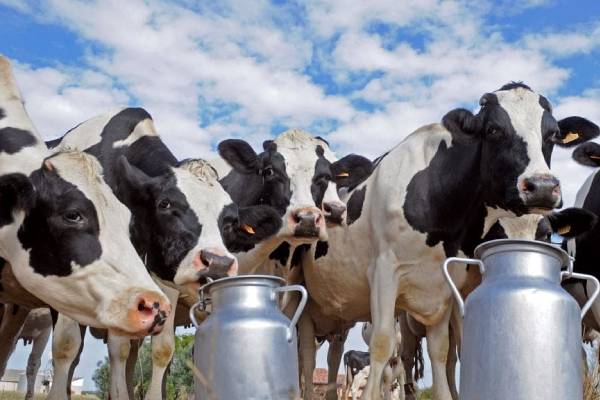All the attempts made to improve local diary industry by even importing cows have failed to archive expected results making Sri Lanka a prime market for powdered milk produced in Australia and New Zealand.
25 years ago Sri Lanka barely imported 5,000 mt per year, this soon increased to 12,000 mt and last year it rose to almost 85,000mt.
The government is spending US$ 350 million per year for milk powder imports,
For the purpose of minimizing the cost incurred on the import of milk powder by avoiding existing shortage of elite cattle, a decision had been reached to import 15,000 elite cattle and distribute them to the farms of the National Livestock Development Board.
Of 4,495 dairy cattle thus imported comprising 2,000 dairy cattle under the first phase in the years 2012 and 2013 and 2,495 dairy cattle under the second phase in the year 2015, 2,500 dairy cattle imported in the year 2015 had been made available to the Hambantota Ridiyagama Farm which is situated in an area not resisting to those animals.
The National Livestock Development Board had failed to settle, as expected, the foreign loan obtained as a sub-loan for this project.
Notwithstanding the matters referred to above, in granting approval for the import of 20,000 dairy cattle under the third phase in pursuance of the Cabinet Decision dated 20 June 2014, a decision had been taken not to distribute the imported cattle directly to the farms.
Instead, it had been decided to keep such cattle under the care of the Government farms and subsequently, distribute the cattle of second generation to the farmers.
Nevertheless, without being complied with that decision, action had been taken in the year 2017 to directly provide 5,000 dairy cattle for the dairy farmers.
Relevant procurement procedures had not been adopted in a manner beneficial to the Government and the procurement procedure had not been abided by at the second and third phases of the importation of dairy cattle.
Further, the feasibility study report applicable to the project had not been presented at an adequate professional standard.
Even though a sum of Rs. 7.9 billion had been spent for the project, the officer concerned had failed to execute the project in a manner achieving the expected results
(LI)

